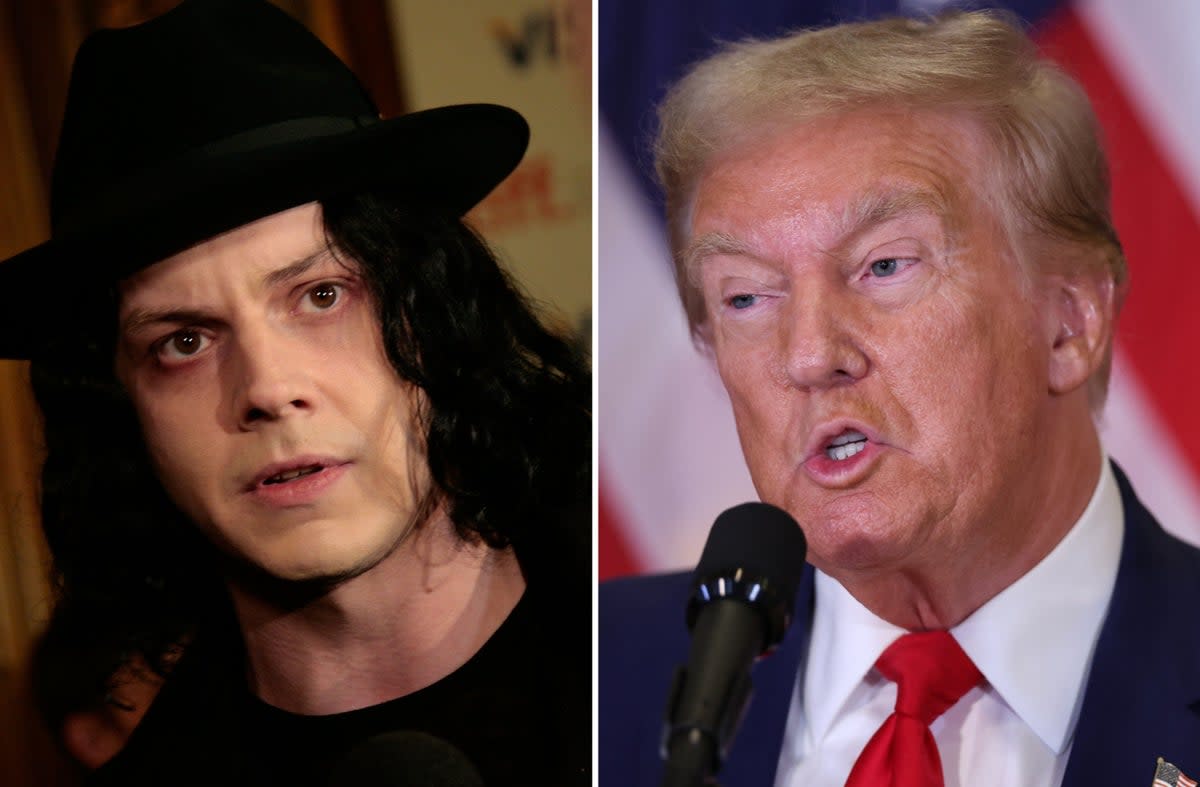A decor dispute has erupted after former White Stripes frontman Jack White publicly criticized the interior design of the Oval Office under President Donald Trump. White’s comments, specifically targeting the gold accents around the fireplace, sparked a sharp response from the White House, highlighting a clash over presidential aesthetics.
The Singer’s Critique
Jack White, known for his musical contributions as the lead singer of The White Stripes, took to Instagram to voice his disapproval of the Oval Office’s current decor. According to White’s post, the design choices under President Trump were “gaudy,” “vulgar,” and reminiscent of a “professional wrestler’s dressing room.” The musician’s critique stemmed from images he saw of President Trump’s meeting with Ukrainian President Volodymyr Zelenskyy, with the gold accents around the fireplace being a particular point of contention.
White House Response
The White House swiftly responded to White’s criticisms. Communications Director Steven Cheung issued a statement, characterizing Jack White as a “washed-up, has-been loser” who is “masquerading as a real artist.” Cheung’s statement, as reported by Fox News and other media outlets, further accused White of disrespecting the Oval Office, framing the singer’s comments as an attack on the institution itself.
Media Coverage and Public Reaction
The exchange between Jack White and the White House garnered significant media attention. Outlets such as Fox News covered the story, highlighting the contrasting opinions and the strong language used by both parties. The incident quickly spread across social media platforms, with users expressing a range of views on the decor of the Oval Office and the appropriateness of White’s public criticism. Some supported White’s right to express his opinion on matters of public interest, while others defended the President’s aesthetic choices and criticized White’s tone.
Presidential Decor: A History of Change
The Oval Office has undergone numerous transformations throughout history, reflecting the tastes and priorities of each sitting president. From the choice of paint colors and furniture to the artwork displayed on the walls, every element contributes to the overall atmosphere of the room. Presidents often use the Oval Office to project a certain image or convey a particular message, making decor a subtle but significant tool of communication.
Design as Political Statement
Presidential decor choices often serve as subtle political statements. For instance, a president might choose to display artwork that reflects their policy priorities or personal values. The selection of furniture and color schemes can also be interpreted as a reflection of a president’s leadership style and vision for the country. These choices, while seemingly superficial, can have a powerful impact on how the president is perceived both domestically and internationally.
Notable Oval Office Redecorations
Throughout history, several Oval Office redesigns have sparked public interest and debate. President John F. Kennedy’s decision to replace the existing rug with a new one featuring the presidential seal was widely noted, as was President Richard Nixon’s choice to install bulletproof glass in the windows. More recently, President Barack Obama’s decision to replace the dark red walls with a lighter, more neutral color scheme was seen as a reflection of his desire for a more open and transparent administration. Each of these changes, no matter how small, has contributed to the ongoing evolution of the Oval Office as a symbol of American power and leadership.
The Role of Public Opinion
Public opinion often plays a role in shaping the decor of the Oval Office. Presidents are generally mindful of how their choices will be perceived by the public, and they may adjust their designs accordingly. In some cases, public outcry over a particular design choice has even led to a reversal of course. This dynamic highlights the importance of the Oval Office as a public space and the president’s responsibility to consider the views of the American people when making decisions about its appearance.
Decor Controversy: A Lasting Impression
The exchange between Jack White and the White House over the Oval Office decor underscores the symbolic weight of the space. While some may view the decor as a trivial matter, it is clear that even seemingly minor details can spark strong reactions and fuel political debate. The incident serves as a reminder that the Oval Office is not just a workspace but also a powerful symbol of American democracy, and its appearance is subject to scrutiny and interpretation by both the media and the public.


